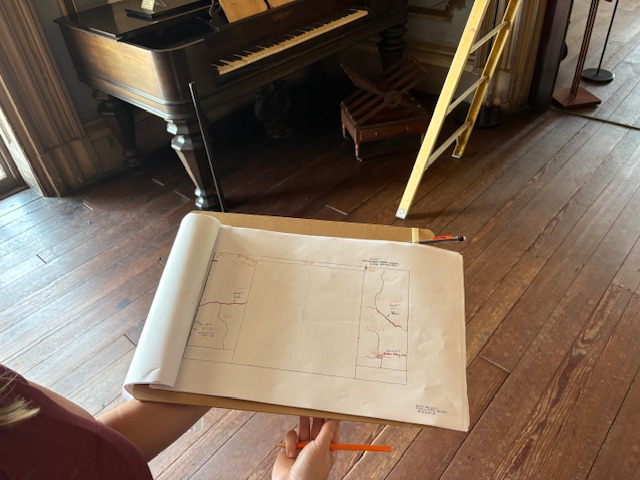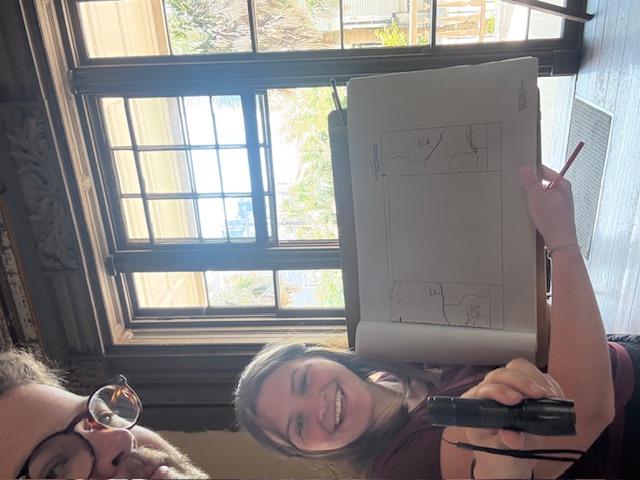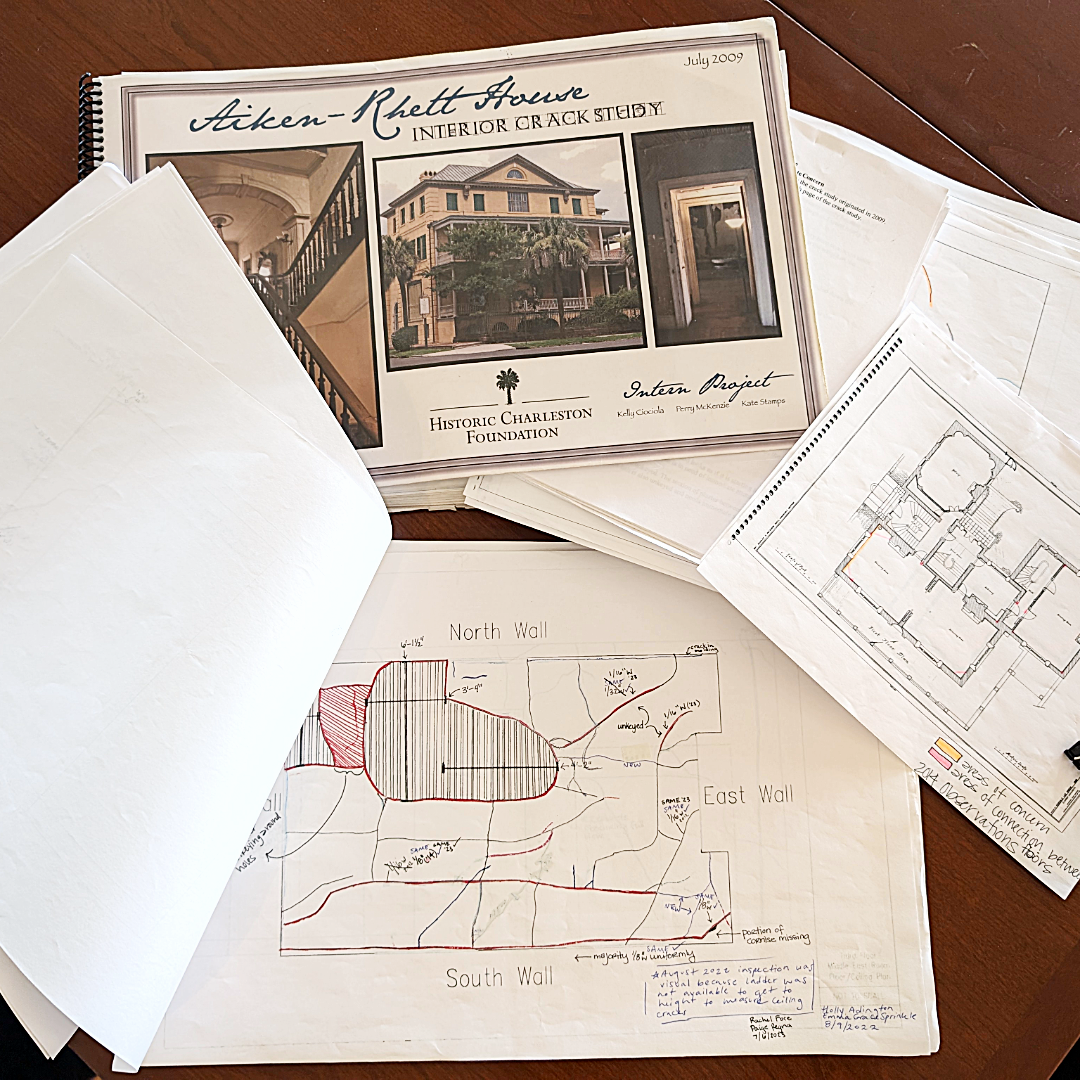Preservation in Action: Crack Study Update with 2025 Interns

.png)
Hi, I’m Jackson Dent, a graduate student in the Master of Science in Historic Preservation program at Clemson University. This summer, I had the opportunity to intern with Historic Charleston Foundation and contribute to the annual plaster crack study at the Aiken-Rhett House. It’s a long-running project that began in 2009 and plays a key role in monitoring both cosmetic and structural changes to the house over time. Originally constructed c.1820, the Aiken-Rhett House underwent major structural changes, particularly to the Double Parlor, in the 1830s and again in the 1850s. One of the advantages of a preserved “as-found” preservation style is the ability to study how effectively preservation tools and techniques work, and how a structure made with the level of material and skill stands the test of time.

The Aiken-Rhett House is over 22,000 square feet, and it's July, so updating the survey is no small task. Using measured drawings and AutoCAD, I worked with fellow preservation intern, Annave Allred (ARTM, College of Charleston) to record and map plaster cracks throughout the interior. This year, we expanded the annual study by documenting cracks in the main and service stairwells for the first time — an important addition that helps us better understand how different areas of the house are aging and shifting. Annave and I also worked to utilize AutoCAD to more accurately map out cracks and changes in the plaster. The use of new tools like AutoCAD on this project will help future interns continue this critical project.

This experience really deepened my appreciation for the level of detail and long-term thinking that goes into preservation work. Being part of a project that combines hands-on documentation with digital tools —and contributes to the ongoing care of such a significant historic site — was incredibly rewarding.
— Jackson Dent, MSHP Clemson University, 2025 Preservation Inten
Preservation projects, like this one, are crucial for the ongoing preservation of the historic Aiken-Rhett House Museum, and our work to better understand and employ the best preservation techniques to preserve and sustain the best of Charleston. Make a gift today to invest in this kind of preservation work at the Aiken-Rhett House and beyond through the city's oldest preservation advocacy organization, Historic Charleston Foundation. For more ways to donate, visit our page here.
